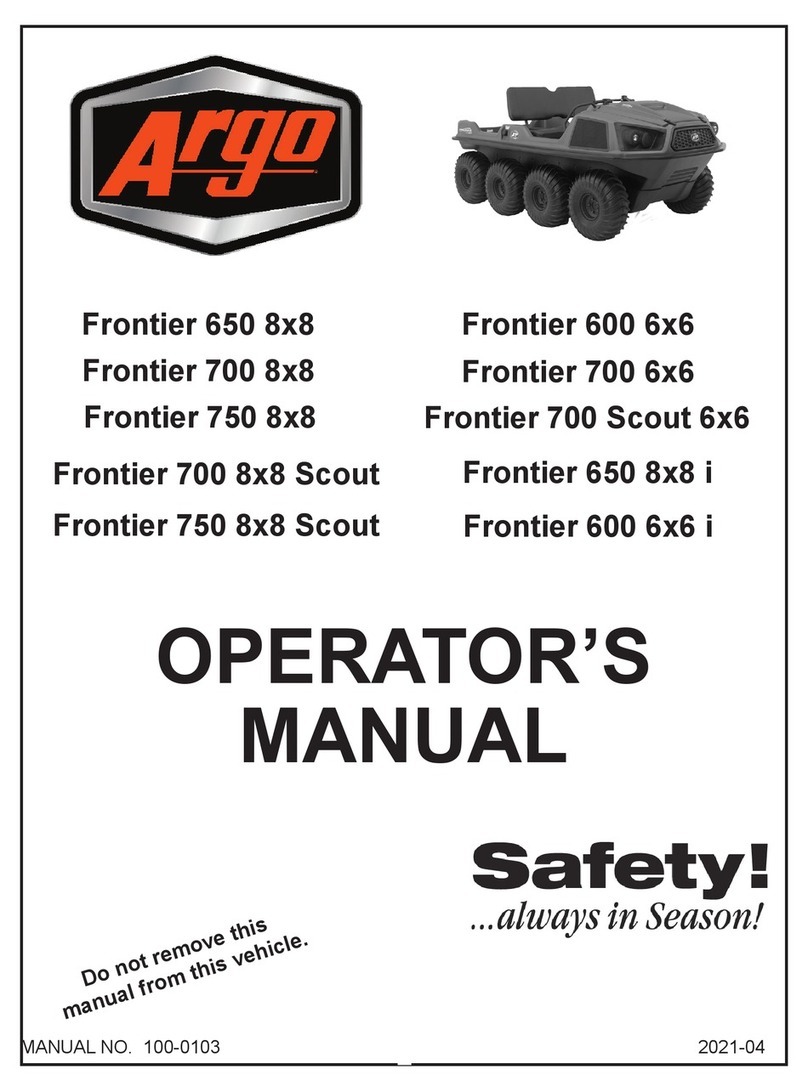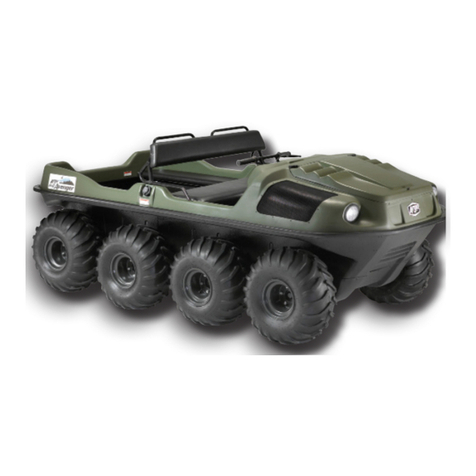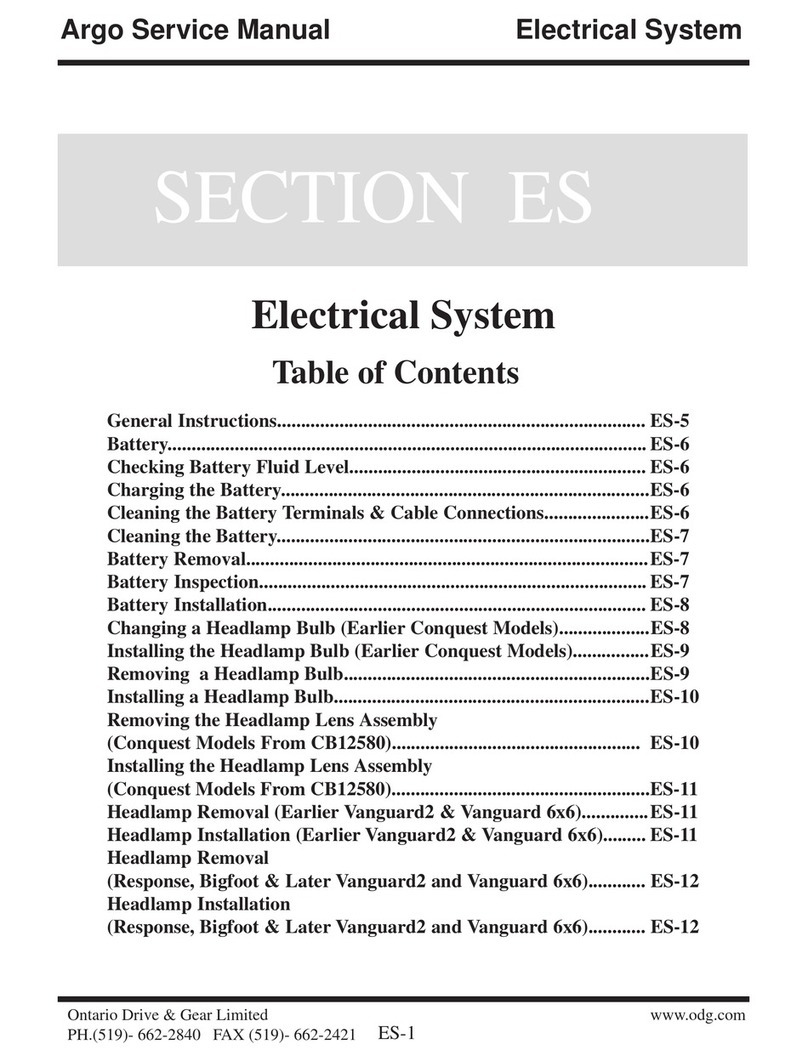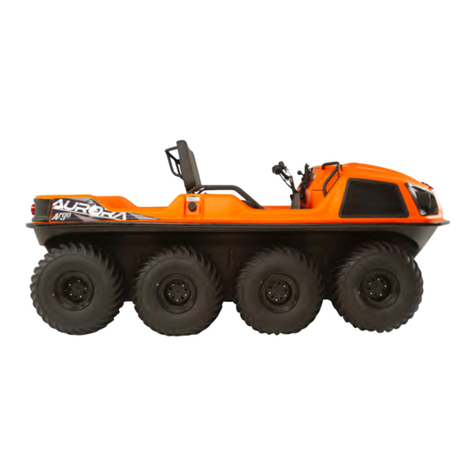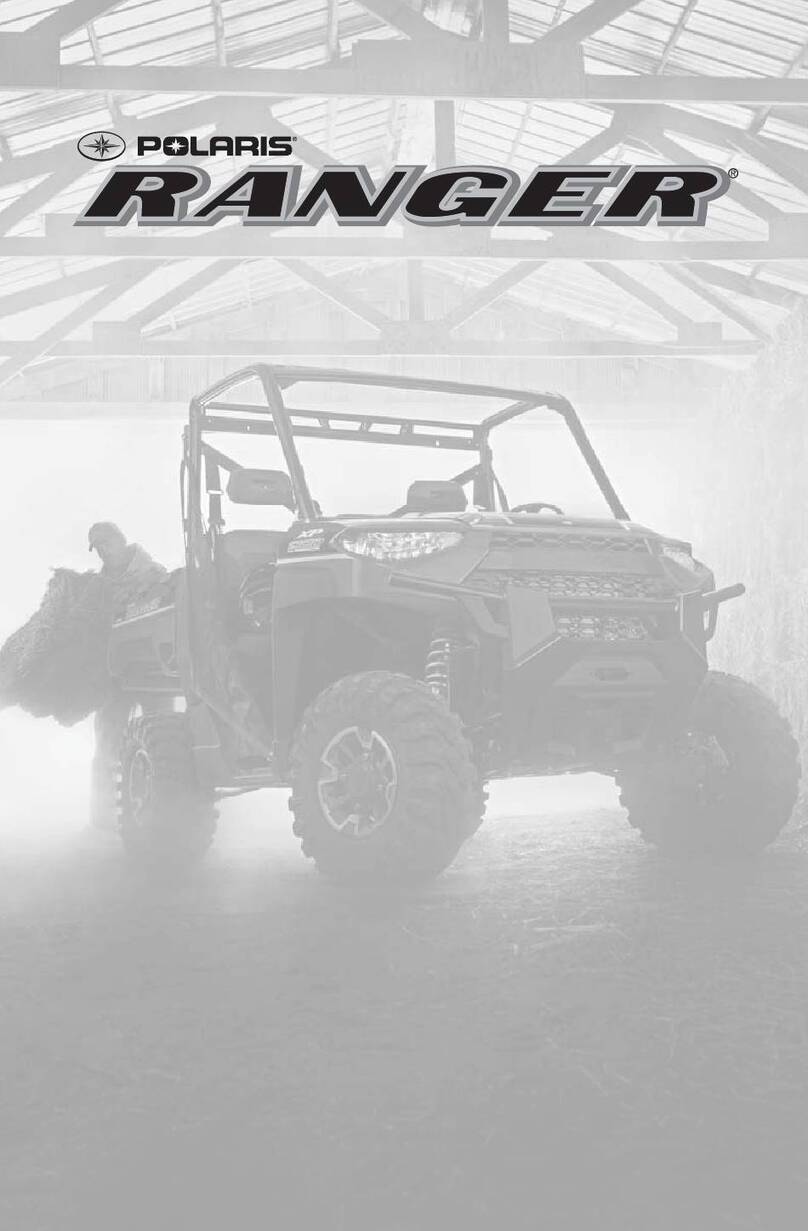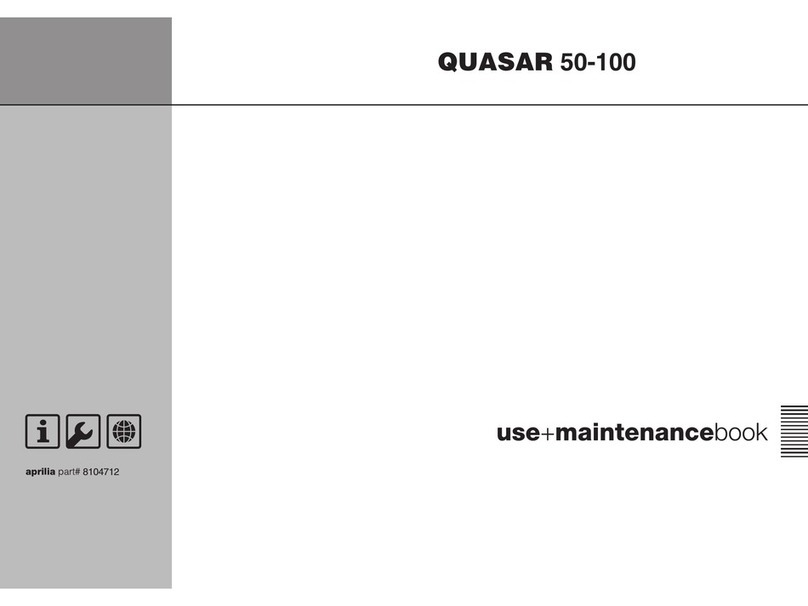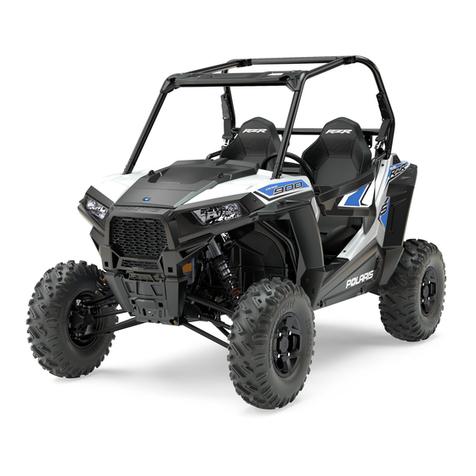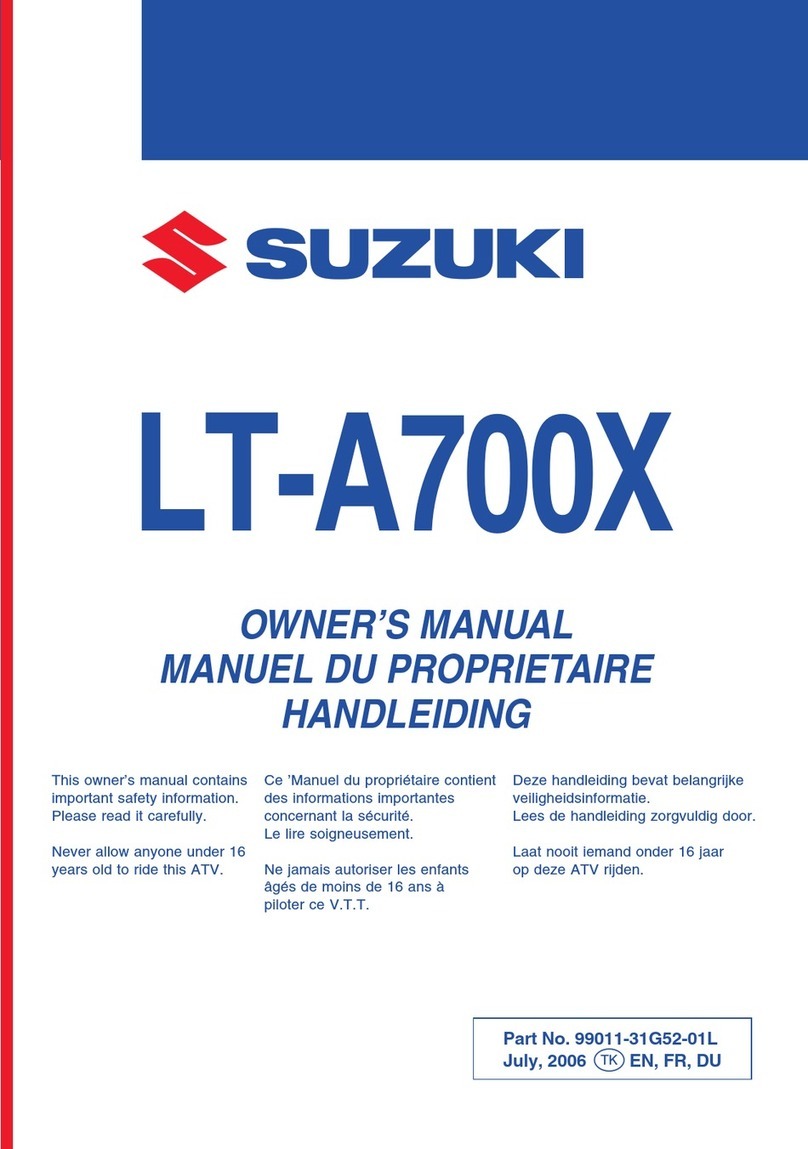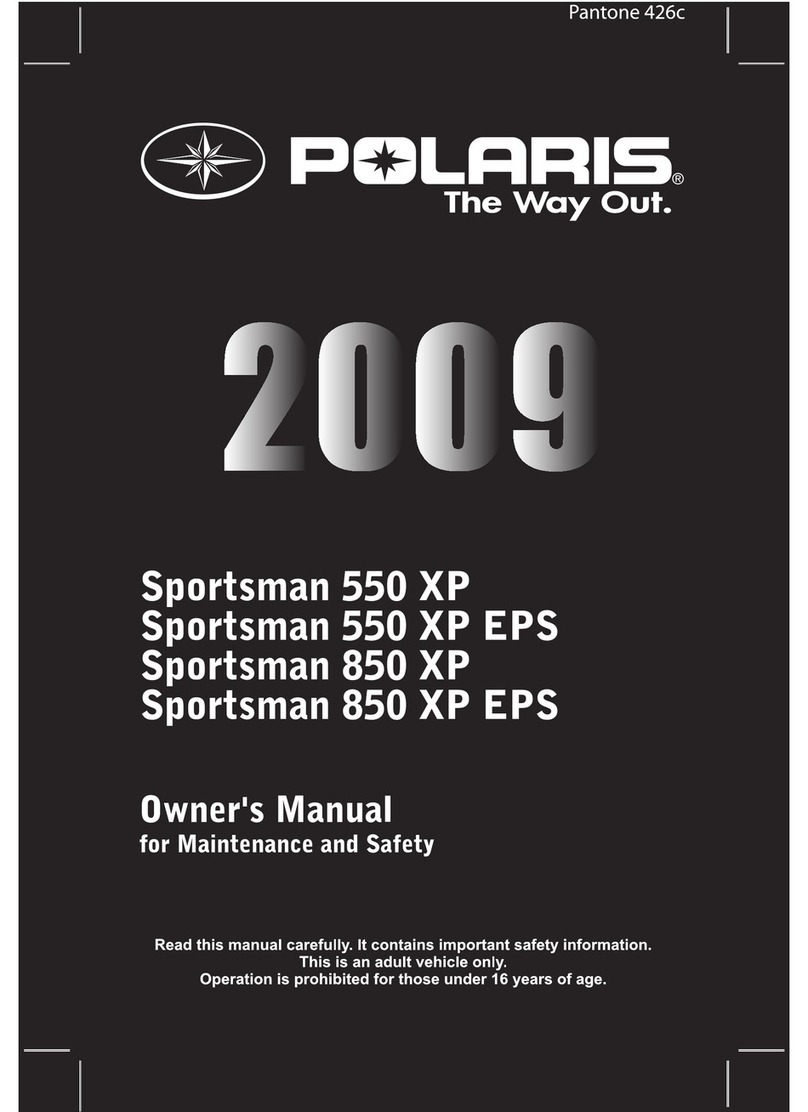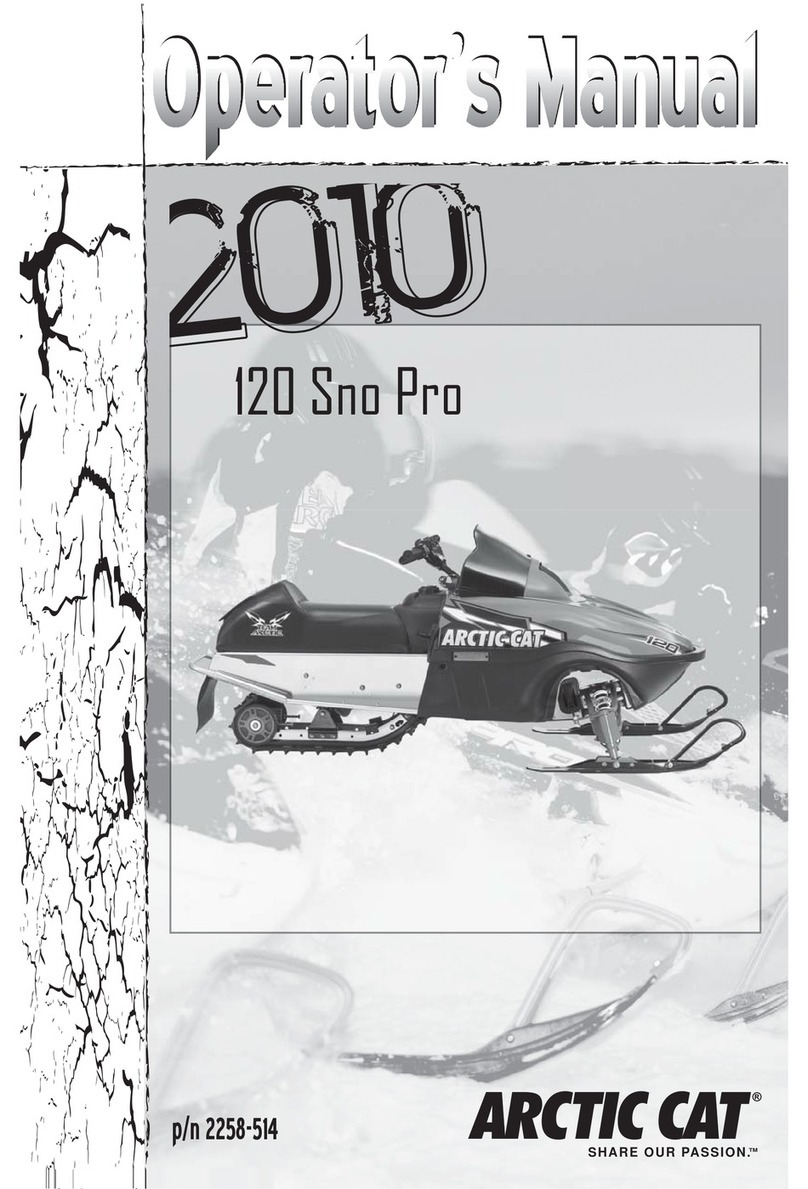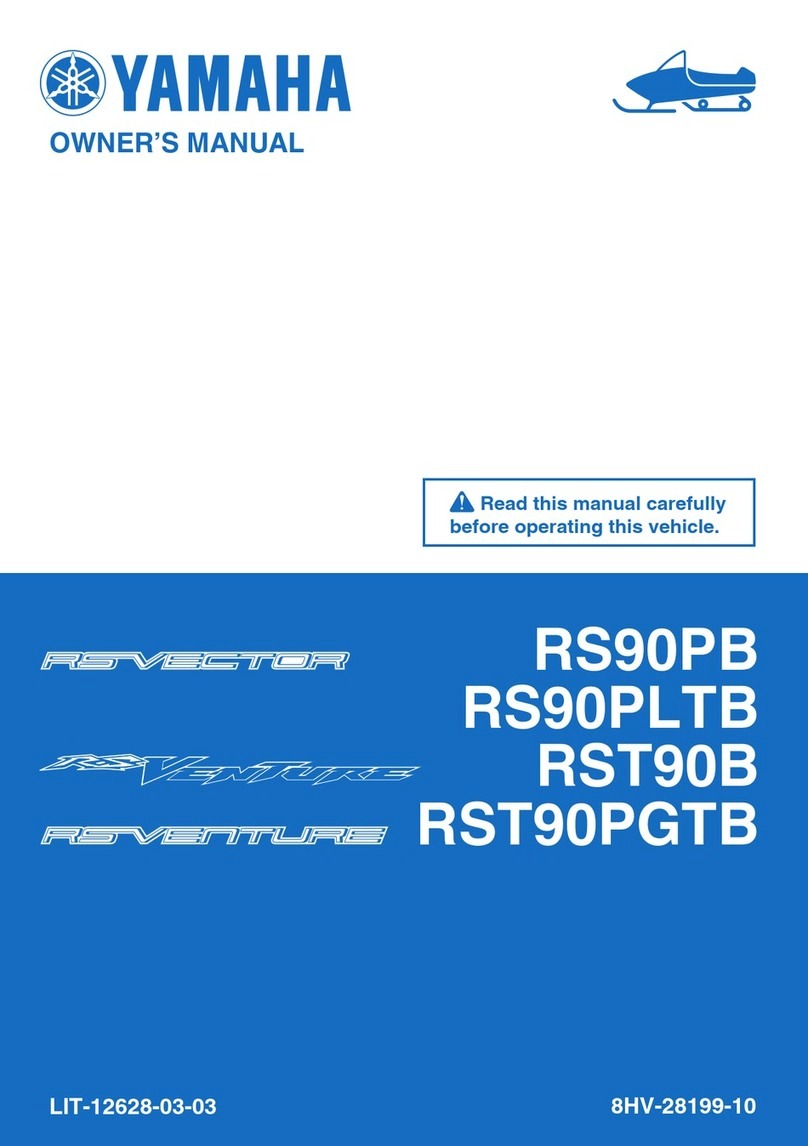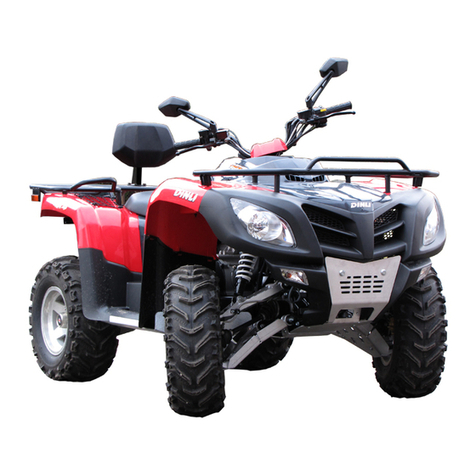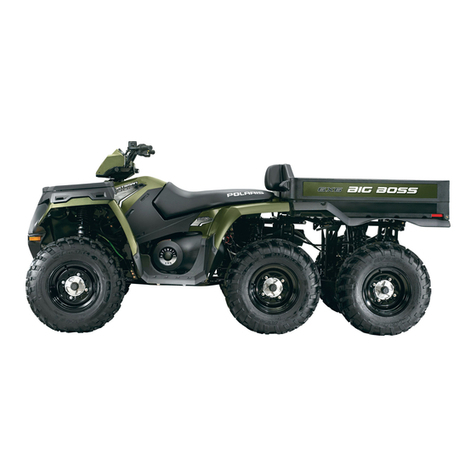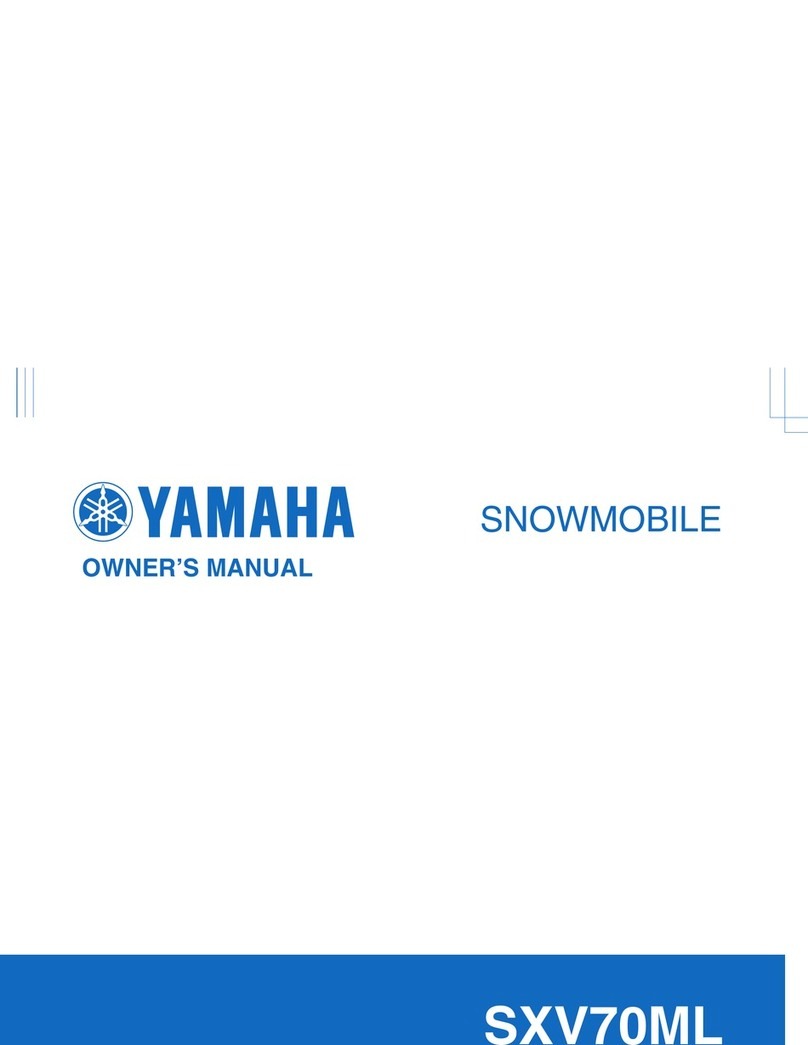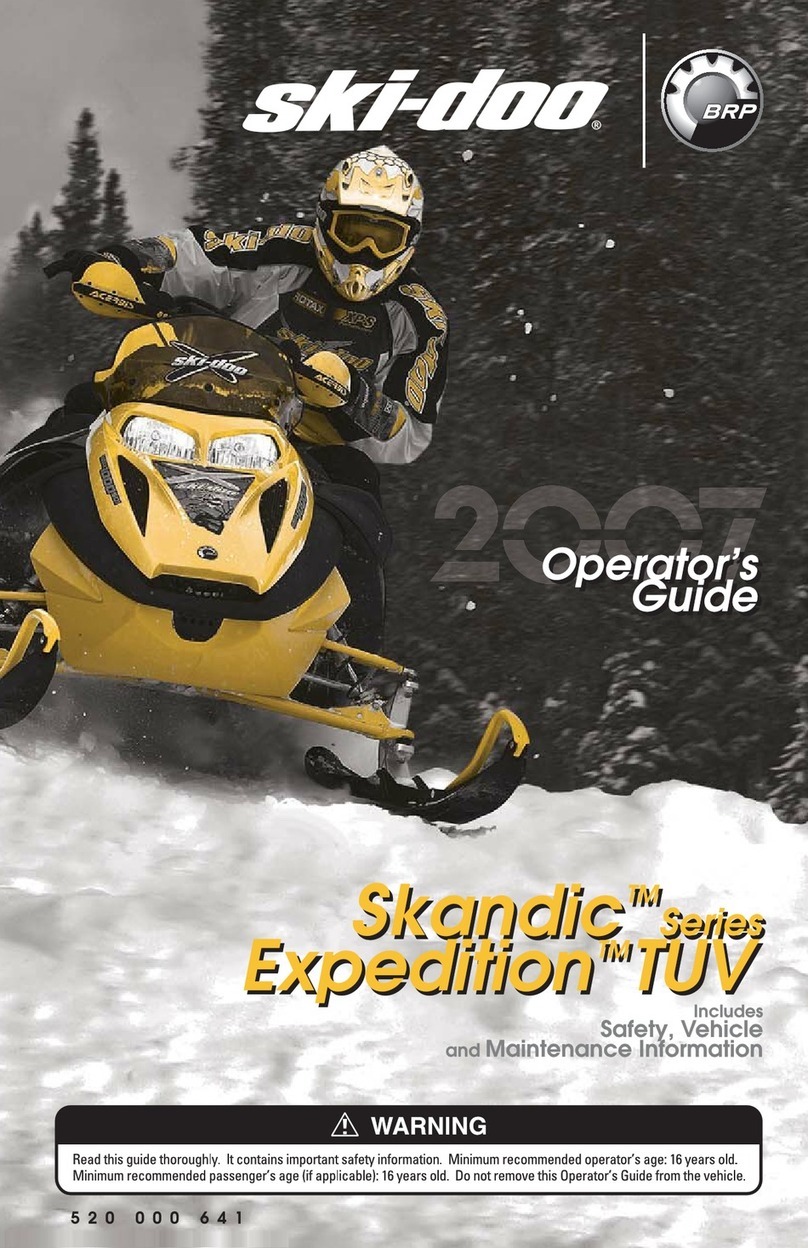
TABLE OF CONTENTS
1.0 GENERAL INFORMATION
1.1 AMPHIBIOUS OPERATION............................................................................................ 1
1.2 MAINTENANCE PROCEDURES ................................................................................... 1
1.3 WIND CHILL FACTOR ................................................................................................. 1
1.4 LEGEND FOR OPERATOR’S MANUAL ....................................................................... 1
1.4.1 Argo Vehicle Capacity............................................................................................... 3
1.4.2 Amphibious Trailer Capacity .................................................................................... 3
1.5 REAR SEATS - 8 WHEEL MODELS............................................................................... 3
1.6 AURORA VEHICLE MATRIX......................................................................................... 5
1.7 IDENTIFICATION AND LOCATION OF CONTROLS.................................................. 8
1.8 INFORMATION LABELS ................................................................................................ 9
2.0 GENERAL OPERATING INSTRUCTIONS
2.1 NEW VEHICLE “BREAK-IN” PROCEDURE ................................................................ 10
2.2 PRE-OPERATION CHECKS ............................................................................................ 10
2.3 CARRYING PASSENGERS AND CARGO..................................................................... 10
2.4 OPERATORS WITH DISABILITIES............................................................................... 11
2.5 FUELING THE VEHICLE................................................................................................ 12
2.6 VENTED FUEL SYSTEM - ALL MODELS.................................................................... 12
2.7 INSTRUMENT CLUSTER............................................................................................. 12
3.0 OPERATING INSTRUCTIONS
3.1 BRAKES AND STEERING .............................................................................................. 14
3.2 EMERGENCY/PARKING BRAKE SYSTEM ................................................................ 14
3.3 THROTTLE CONTROL ................................................................................................... 14
3.4 STARTING PROCEDURE................................................................................................ 14
3.5 PRIMING PROCEDURE.................................................................................................. 15
3.6 STOPPING THE ENGINE ................................................................................................ 15
3.7 SELECTING AND CHANGING TRANSMISSION GEARS ......................................... 15
3.8 HEADLIGHTS ............................................................................................................... 16
4.0 DRIVING PROCEDURES
4.1 DRIVING STRAIGHT AHEAD ....................................................................................... 17
4.2 STOPPING THE VEHICLE.............................................................................................. 17
4.3 TURNING THE VEHICLE............................................................................................... 17
4.3.1 Left Turn.................... ............................................................................................... 17
4.3.2 Right Turn ................ ................................................................................................ 17
4.4 BACKING THE VEHICLE UP......................................................................................... 17
4.4.1 Turnin the vehicle while backing up ........................................................................ 17
4.5 GEAR SELECTION - ADMIRAL TRANSMISSION ........................................................... 18
5.0 DRIVING PROCEDURES DURING UNUSUAL CONDITIONS
5.1 REMOTE AREA USE ..........................................................................................................19
5.2 ANGLE OF OPERATION....................................................................................................19
5.3 UPHILL OPERATION .........................................................................................................19
5.4 DOWNHILL OPERATION..................................................................................................19
5.5 SIDE SLOPE OPERATION .................................................................................................20
5.6 AMPHIBIOUS OPERATION - GENERAL.........................................................................20
5.6.1 Entering Water ........................................................................................................21
5.6.2 Driving Procedures in Water...................................................................................21
5.6.3 Driving Out of Water..............................................................................................22
5.6.4 Outboard Motor Bracket.........................................................................................22
III
SECTION
PAGE
